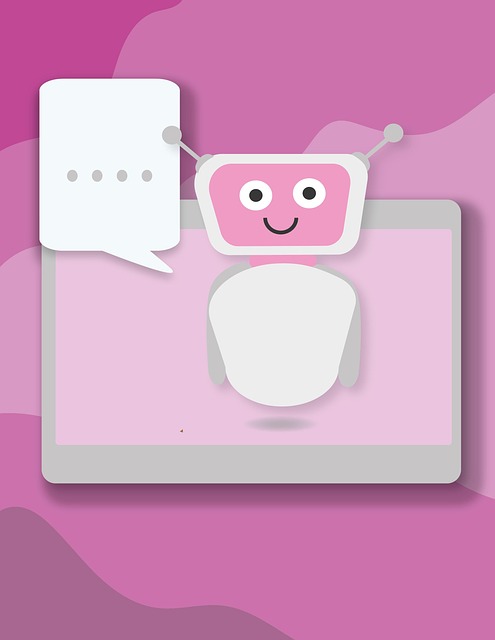AI chatbots, such as oChatbots, are transforming business operations by providing 24/7 customer support, improving satisfaction and loyalty through instant responses, and handling a wide range of inquiries. They free up human agents to focus on complex issues, boost productivity, and gather valuable customer data for targeted marketing strategies. Success is measured via KPIs like user satisfaction, conversation volume, interaction rates, and conversion rates. Implementing an oChatbot can lead to increased revenue growth by enhancing customer experience, reducing costs, and improving operational efficiency, making it a game-changer in the digital era.
“In the digital age, AI chatbots have emerged as indispensable tools for modern businesses aiming to enhance customer engagement and streamline operations. This article delves into the strategic significance of implementing an Ochatbot, exploring its role in improving customer experience and satisfaction. We’ll guide you through measuring success using key performance indicators (KPIs) and provide a comprehensive cost-benefit analysis to help understand the return on investment (ROI) potential of these intelligent assistants.”
- Understanding the Role of AI Chatbots in Modern Businesses
- Measuring Success: Key Performance Indicators for Chatbots
- Enhancing Customer Experience and Satisfaction with Chatbot Implementation
- Cost-Benefit Analysis: Calculating the ROI of an Ochatbot
Understanding the Role of AI Chatbots in Modern Businesses

AI chatbots are transforming the way modern businesses operate, offering a range of benefits that enhance customer experience and streamline operations. These intelligent virtual assistants are designed to engage in natural language conversations, providing instant support and information to users. By understanding user queries and delivering relevant responses, oChatbots improve customer satisfaction and loyalty.
In today’s fast-paced business environment, where customer expectations are higher than ever, AI chatbots provide a 24/7 availability that traditional customer service teams cannot match. They can handle a high volume of simple to complex inquiries, allowing human agents to focus on more intricate issues. This efficient distribution of tasks leads to increased productivity and cost savings for businesses. Additionally, oChatbots gather valuable customer data during interactions, enabling companies to gain insights into consumer behavior, preferences, and pain points, which can be leveraged for targeted marketing strategies.
Measuring Success: Key Performance Indicators for Chatbots

Measuring the success of an AI chatbot involves tracking specific Key Performance Indicators (KPIs) that reflect its effectiveness and return on investment (ROI). One critical KPI is user satisfaction, gauged through customer feedback and net promoter scores. If users find the chatbot helpful, engaging, and responsive to their needs, it indicates successful design and implementation.
Another essential metric is conversation volume and duration. Tracking the number of interactions and average chat length shows how frequently and for how long users engage with the chatbot. High interaction rates suggest that the chatbot is providing value, while longer conversations may indicate complex queries being resolved efficiently. Conversion rates—the percentage of users taking a desired action, such as making a purchase or filling out a form—are also vital in understanding an ochatbot’s impact on business goals.
Enhancing Customer Experience and Satisfaction with Chatbot Implementation

Implementing an AI chatbot can significantly enhance customer experience and satisfaction, a key performance indicator (KPI) for any business. By offering instant, 24/7 support, chatbots improve response times and reduce wait times, allowing customers to quickly resolve their queries or issues. This level of accessibility fosters a sense of personalized attention, boosting customer loyalty and retention.
Moreover, AI chatbots can understand and interpret human language nuances, providing relevant and contextually appropriate responses. They can gather and analyze customer data to anticipate needs, offer tailored recommendations, and upsell or cross-sell products effectively. Such proactive engagement improves customer satisfaction and increases the likelihood of conversions and repeat business, ultimately driving revenue growth.
Cost-Benefit Analysis: Calculating the ROI of an Ochatbot

The return on investment (ROI) of an Ochatbot is a critical metric for businesses to understand before implementing AI-driven conversational interfaces. Cost-benefit analysis plays a pivotal role in justifying the expenses associated with developing and deploying these chatbots. By evaluating the direct and indirect savings, as well as revenue generation potential, companies can ascertain the financial viability of their investment.
When calculating ROI, consider both operational efficiency gains and customer experience enhancements. For instance, an Ochatbot can reduce human agent workload, lowering labor costs and increasing response times. Additionally, improved customer satisfaction due to 24/7 availability and personalized interactions can lead to increased sales and customer retention. Accurately quantifying these benefits allows businesses to make informed decisions about the strategic deployment of AI chatbots.
AI chatbots, or ochatbots, have become invaluable assets for modern businesses, offering significant returns on investment (ROI). By implementing these conversational AI solutions, companies can expect improved customer experience and satisfaction, increased operational efficiency, and reduced costs. Through meticulous measuring of key performance indicators, businesses can demonstrate the tangible value of their ochatbot investments, solidifying its role as a game-changer in customer engagement and process optimization.
